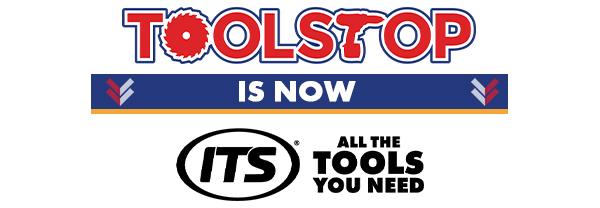Vacuum Lifters
Vacuum lifters provide safe and efficient lifting solutions for heavy, flat objects like glass panels, metal sheets, and tiles. Perfect for construction and manufacturing, these tools enhance productivity while reducing manual strain and ensuring precise handling.
Who Uses Vacuum Lifters?
Vacuum lifters are trusted by professionals in various industries for their ability to lift and position heavy, fragile, or cumbersome materials with ease and precision.
- Glaziers – Glaziers use vacuum lifters to handle large glass panels, ensuring safe and secure placement in construction projects.
- Construction Workers – Ideal for lifting and positioning heavy tiles, concrete slabs, and panels at job sites.
- Manufacturers – Vacuum lifters streamline production processes by moving metal sheets or other materials efficiently.
- Installers – Perfect for placing large, flat surfaces like countertops, flooring, or walls during installations.
Vacuum Lifters Are Great for Jobs Such As:
- Installing windows and glass panels – Safely lift and position heavy glass panels for precise installation.
- Handling heavy tiles or stone slabs – Move and align large tiles or slabs without damaging them.
- Industrial manufacturing tasks – Enhance efficiency when handling sheets of metal or similar materials in factories.
- On-site construction tasks – Reduce manual effort and increase precision when positioning structural panels.
- Transporting fragile materials – Prevent damage by securely lifting and transferring delicate items like mirrors or acrylic panels.
How to Choose the Best Vacuum Lifter
Selecting the right vacuum lifter is crucial for ensuring efficiency, safety, and precision when handling heavy materials. Here are the key specifications to consider before making your choice:
1. Weight Capacity
Key Consideration: Ensure the vacuum lifter can handle the maximum weight of the materials you intend to lift. Overloading can compromise safety and efficiency.
Pro Tip: Choose a lifter with a slightly higher capacity than your heaviest load to account for uneven weight distribution.
2. Suction Cup Material
Key Consideration: The material of the suction cup determines its grip strength and compatibility with various surfaces. Silicone or rubber cups are ideal for glass, while harder materials work better for rough or porous surfaces.
Pro Tip: Opt for adjustable suction cups if you need versatility across different materials.
3. Power Source
Key Consideration: Decide between manual, corded, or battery-powered lifters based on your work environment. Cordless models offer portability but may require frequent recharging.
Pro Tip: For industrial use, opt for corded lifters with continuous power supply to ensure uninterrupted operation.
4. Safety Features
Key Consideration: Look for safety features like vacuum pressure indicators, emergency release valves, and audible alarms to prevent accidents during operation.
Pro Tip: Regularly inspect and maintain safety mechanisms to ensure they function as intended.
5. Ease of Handling
Key Consideration: Lightweight designs with ergonomic grips reduce strain during prolonged use. Ensure the lifter’s controls are easy to operate.
Pro Tip: Test the lifter’s balance and adjustability before committing to a purchase for a better user experience.
Popular Accessories for Vacuum Lifters
Choosing the right accessories can elevate the performance of your vacuum lifter, ensuring safer handling and enhanced efficiency. Here are the top accessories that pair perfectly with vacuum lifters:
1. Replacement Suction Cups
Replacement suction cups are essential for maintaining the strong grip of your vacuum lifter. Available in various materials, these ensure compatibility with different surfaces, such as glass, tiles, and metal sheets.
2. Vacuum Pressure Gauges
Vacuum pressure gauges help monitor the suction strength of your lifter, ensuring it operates at optimal levels. This accessory enhances safety by providing real-time feedback during use.
3. Extension Arms
Extension arms increase the reach of your vacuum lifter, making it easier to handle larger or awkwardly shaped materials. They are ideal for projects that involve oversized panels or extended working distances.
Frequently Asked Questions
What are vacuum lifters used for?
Vacuum lifters are primarily used to lift and transport materials with flat, non-porous surfaces, such as glass, metal sheets, or tiles. They are ideal for reducing manual strain and ensuring safe handling in construction, manufacturing, and installation projects.
Are vacuum lifters safe to use?
Yes, vacuum lifters are designed with safety in mind. Features like vacuum gauges, warning alarms, and auto-release systems ensure secure operation. Always check the weight capacity and inspect the device before use to prevent accidents.
What types of surfaces can vacuum lifters handle?
Vacuum lifters work best on smooth, non-porous surfaces such as glass, polished metal, and tiles. For slightly textured or porous materials, specialised suction cups may be required to ensure a strong grip.
How do I maintain my vacuum lifter?
Regular maintenance includes cleaning suction cups, checking vacuum seals for wear, and inspecting the pump for proper operation. Replace damaged parts promptly to maintain efficiency and safety.
Can vacuum lifters handle heavy loads?
Yes, vacuum lifters come in various weight capacities, ranging from lightweight models for small items to industrial-grade lifters for heavy materials. Always choose a lifter rated for the weight of your intended load.



